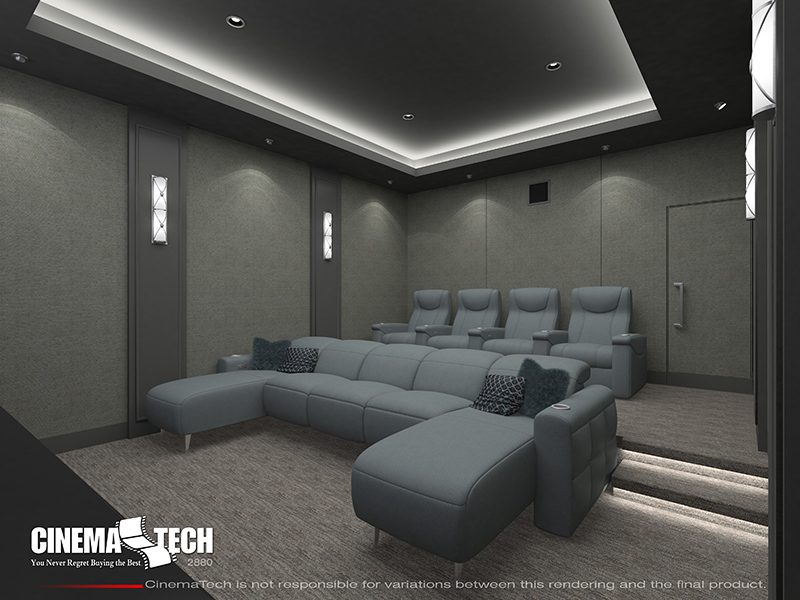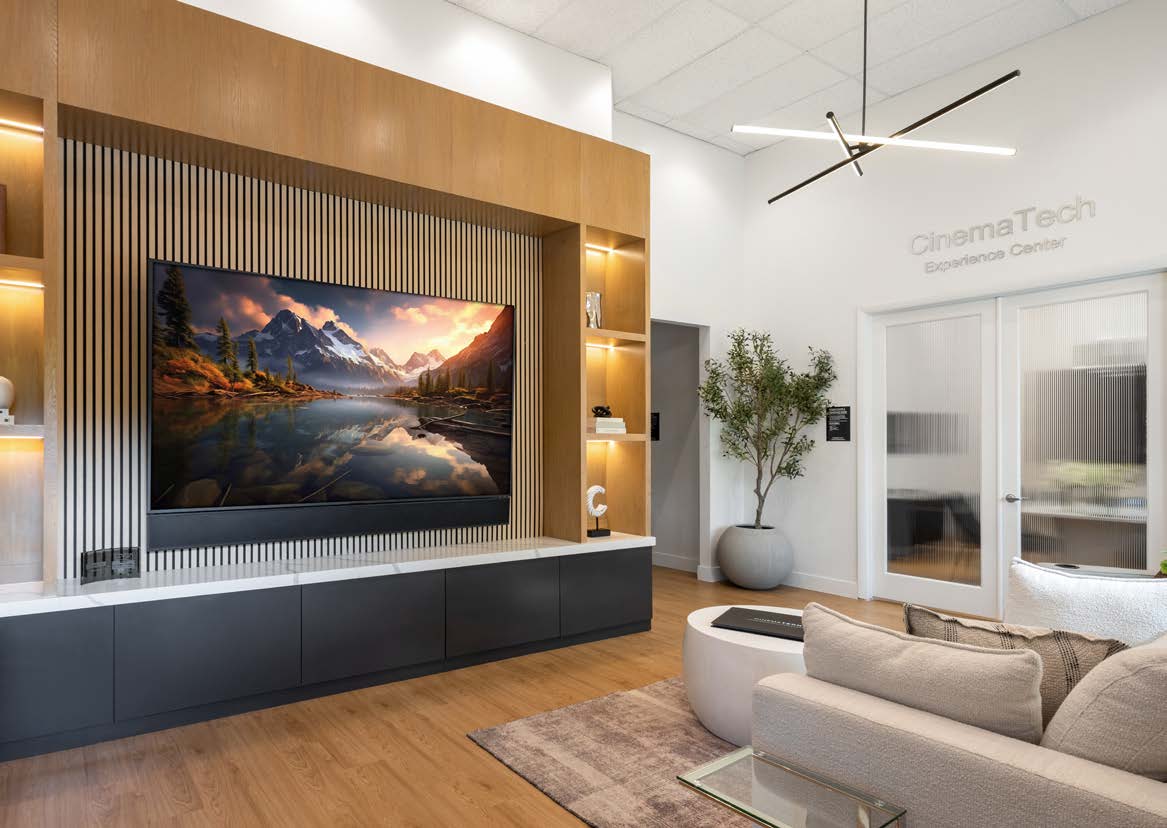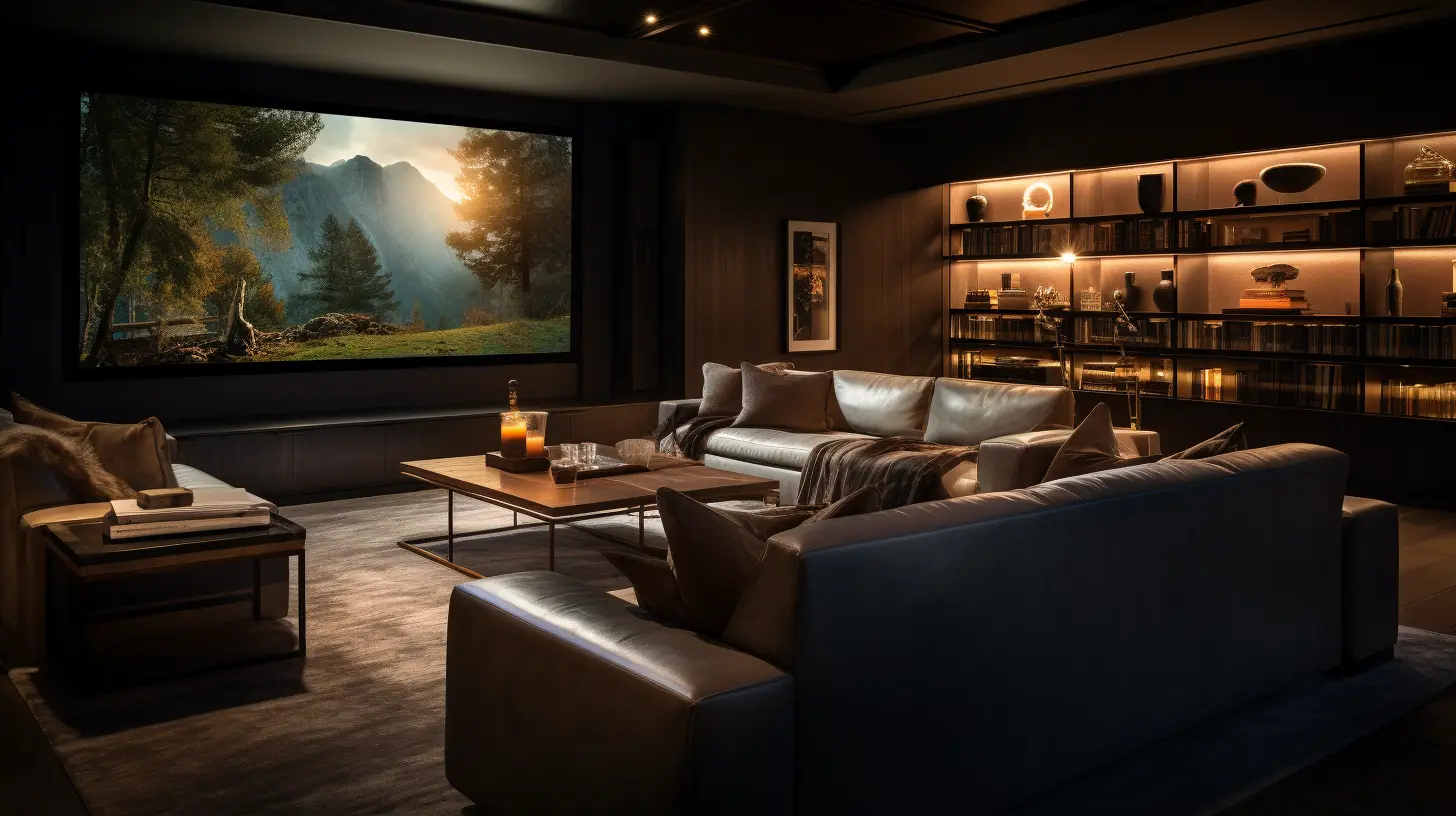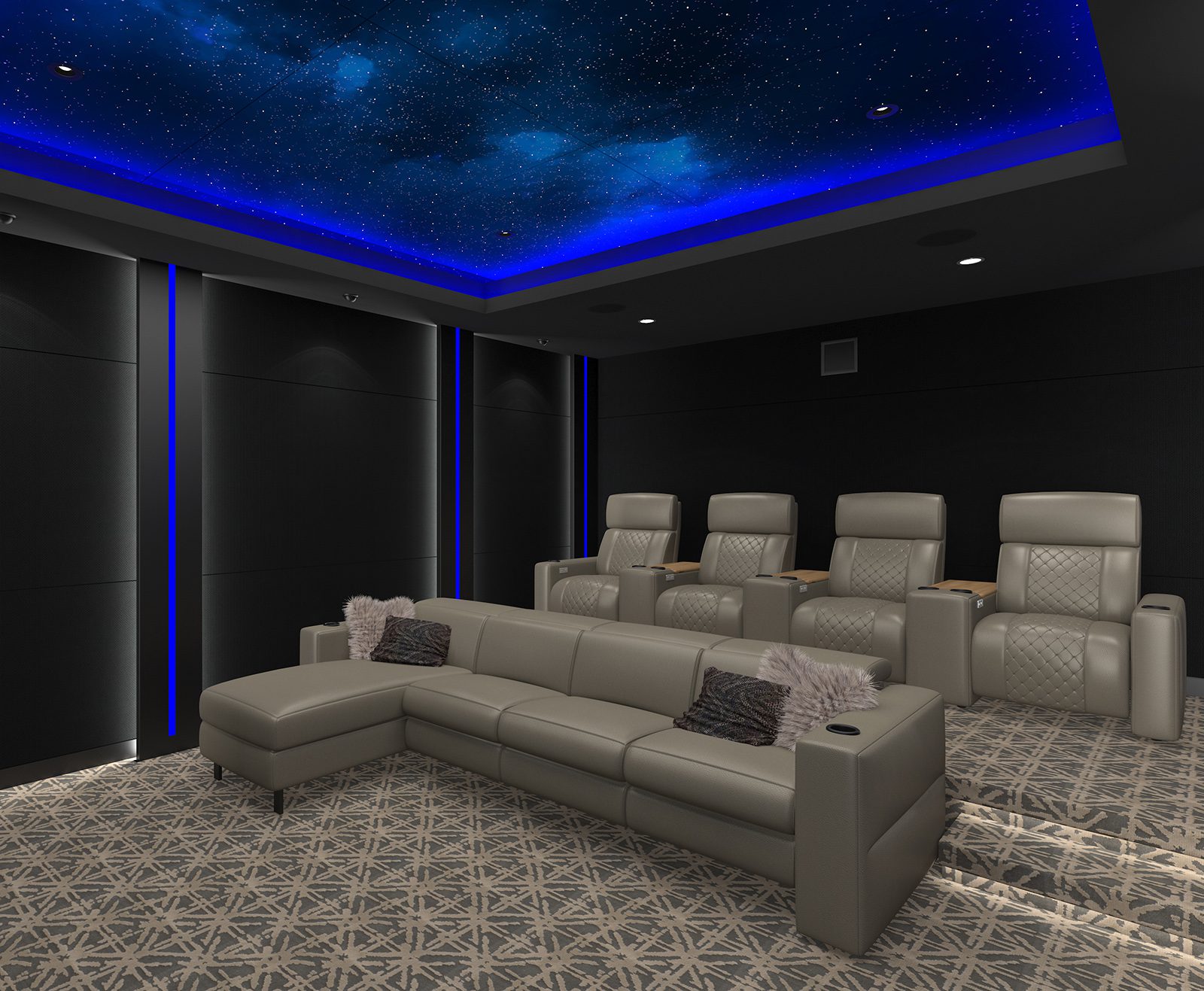
Did you know that having a pitch-black room while watching a lit screen (i.e. your tv or projector screen) can actually cause strain to your eyes and head? That’s right – sitting in a completely dark home theater with flashing lights (ie motion on the screen) can accelerate how tired your eyes become and in some cases cause motion sickness. This type of setup can make a home theater experience uncomfortable and discourage use of the space. CinemaTech designs nearly 100 custom theaters every year and helps ensure the end-user experience has a properly lit space. In this article, we are going to reveal our 4 secrets to the best home theater lighting experience.
1. Plan for the Best Experience
Home theater lighting is more than just “ambient” lighting. Many of our homeowners use the space for more than movie night. It serves as an essential space for entertaining, spending time with the family and more. These other uses don’t always require dark lighting; instead needing home theater lighting that accommodates the various modes the room serves. Before starting on your home theater project, take into consideration what else the space will be used for. Home theater lighting can require significant electrical work before the drywall and other structural elements are in place. Bringing in a certified electrician and lighting designer can add significant value to the design phase of your custom home theater. They can ensure the room is equipped with the right electrical requirements for the design, preventing frustration later on!
2. Using Blackout Shades and Curtains
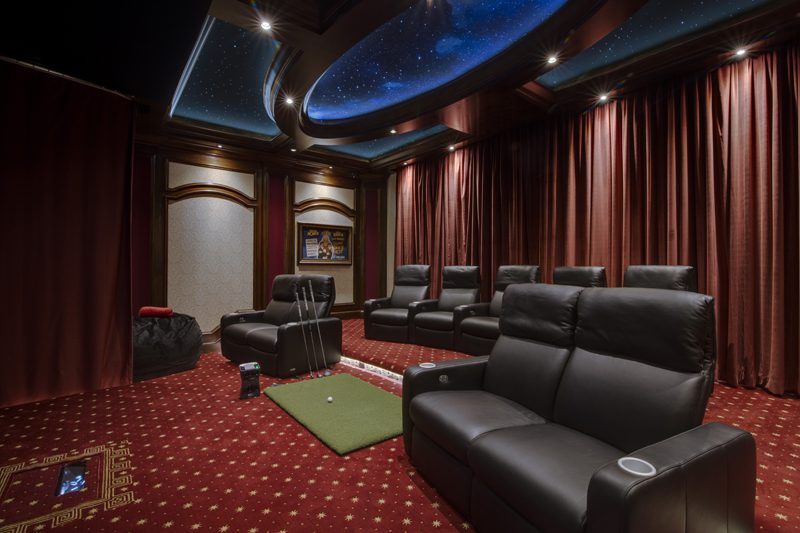
As home theaters expand to media rooms and multi-purpose rooms, it’s common to select a room with windows. This is completely acceptable and when using blackout shades, you have a space that is adaptable to any scenario. In the images above, we are showing a project we designed in which the room was both a theater with a golf simulator as well as an entertaining space. As you can see, the shades, when closed, provide a perfectly lit environment for a movie or golf.
3. Setting the Scene
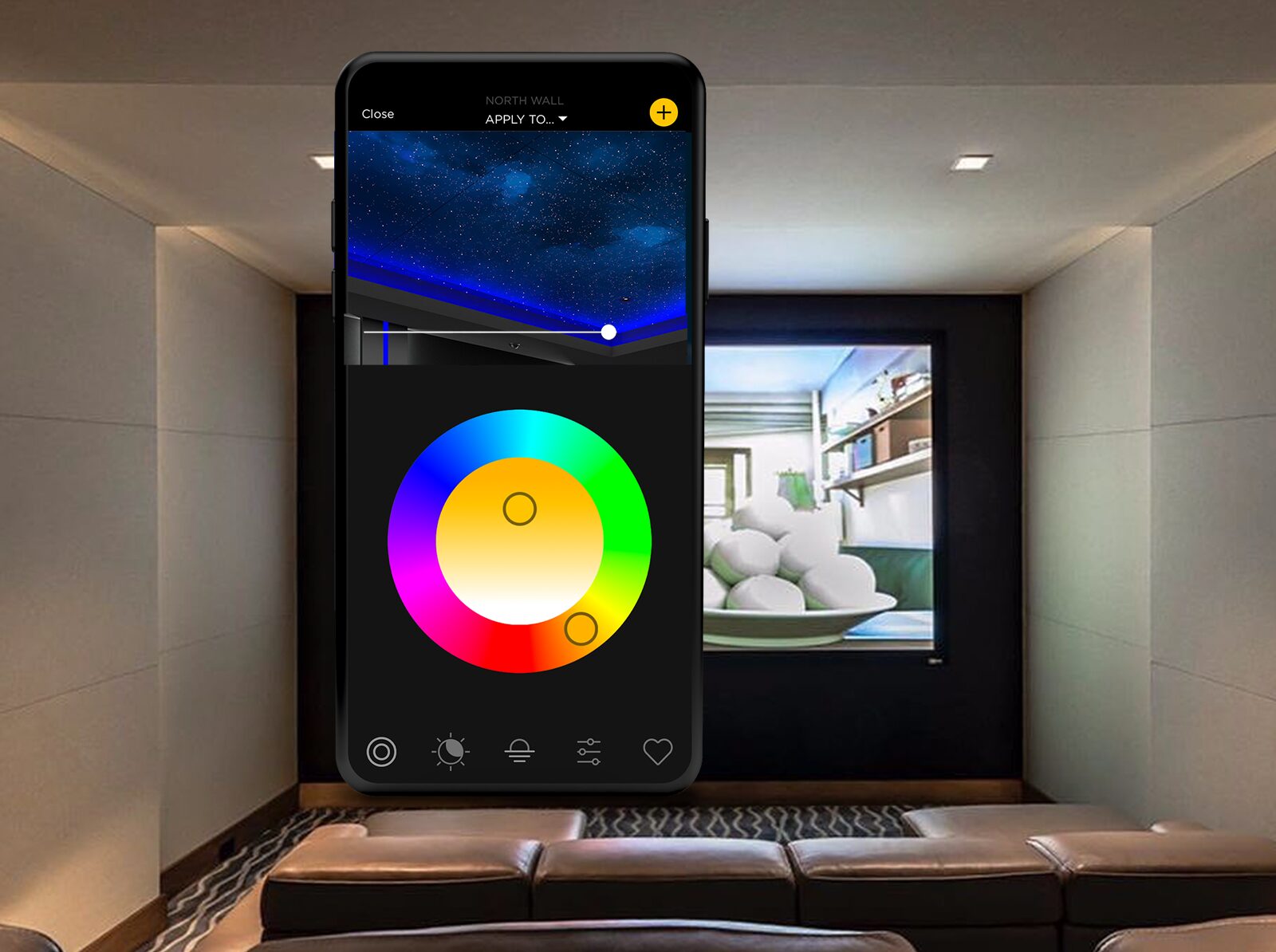
We’ve discussed that a home theater is frequently used as more than a dedicated movie room. Just as the functions in your room change, shouldn’t the lighting? Using automation functionality like those found from Savant or Crestron can effortlessly modify the light in the space to adapt to what’s taking place. For example, if it’s Game Night, a scene can be programmed into the system to allow the lights closest to the screen on, so gamers can see their controls. For movie night, the overhead lights can be dimmed, and the cove or column lighting can be applied.
4. Integrate the Lighting Into the Architecture
Placing a light in a home theater, just to have a light doesn’t do the space any justice and could have a negative effect on the experience. If your budget can afford it, we recommend integrating lighting elements into the architecture. Whether it’s through column lights, cove lighting, step lighting or a star ceiling, there are endless options to blend lighting into the space. Let’s take a deeper look into each:
Column Lighting:
This space features soft LED column lighting to supplement the dimmed recessed ceiling lights. Using soft LED column lighting, like shown in this home theater adds just enough light to see your controls, and beverages, but not too much to take away from what’s on the screen.
Cove Lighting with Sconces
Using architectural sconces in your home theater can drastically enhance the tone of the space. In this project, the homeowner selected an art-deco sconce to complement the modern lines of the columns and cove. We also added LED lighting to the cove to enhance the architecture of the room as well as provide a perfect amount of ambient lighting.
Star Ceiling with Cove and Column Lighting
This beautiful home theater design does an incredible job at combining column lighting, with sconces, cove lighting and our signature star ceiling. Combining all of these lighting features may sound ostentatious, but when applied in subtle tones, it can add a dramatic flare to any space.
Continuous LED Column Lighting
Typically done in modern or contemporary home theater designs, LED lighting makes it very easy to continue column lighting to the ceiling. Looking at the example above, our designer applied the lights in a staggered fashion to make the room dynamic and fluid.
Wrap Up
Proper home theater lighting is just as important to the space as your selection of equipment. It is an essential part to defining the space and creating the right ambiance. Whether you’re designing a dedicated home theater or a media room, how the room is lit plays a crucial role in the way people feel from the moment they step inside!

